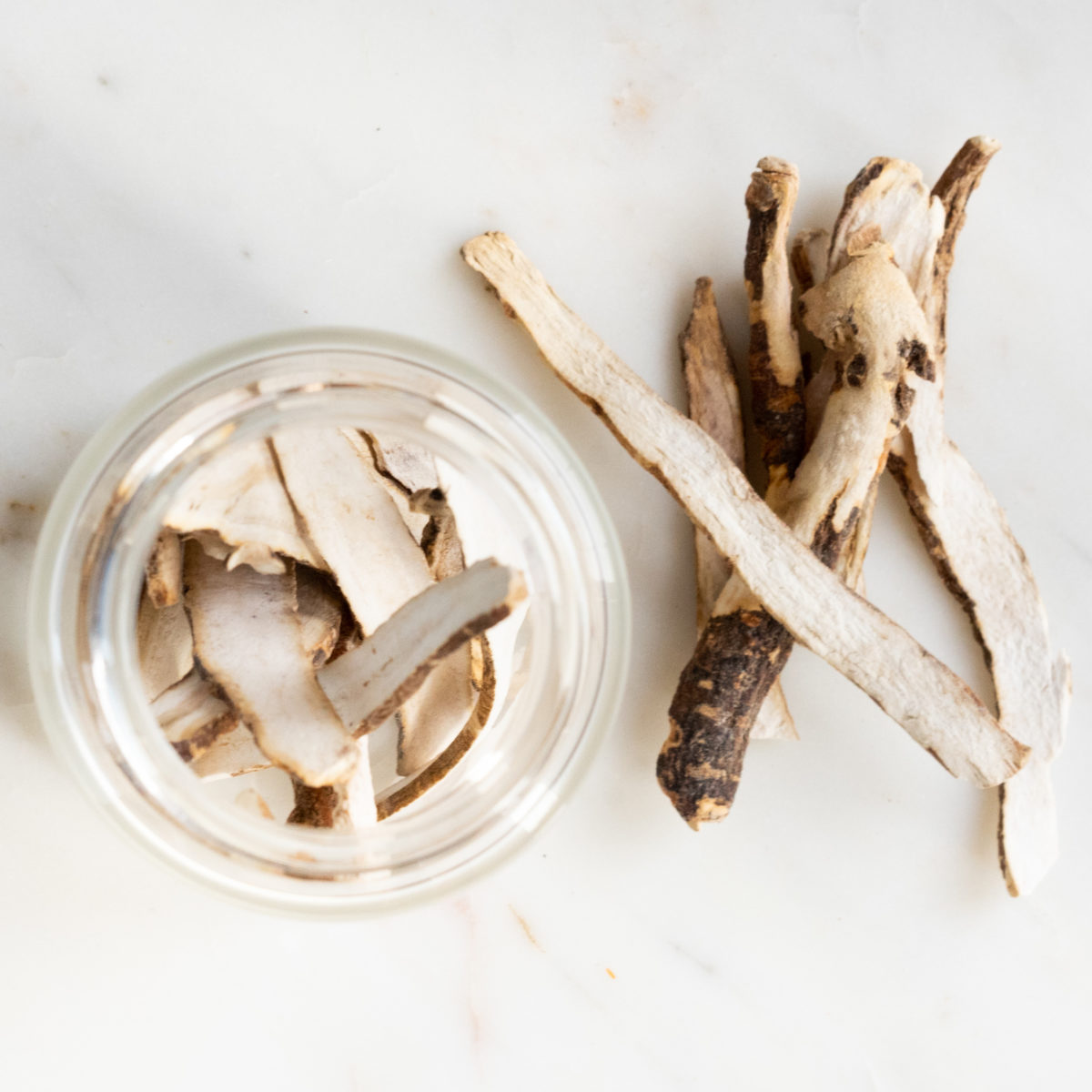
COMMON NAME (Chinese Name)
Red Peony (Chi Shao)
BOTANICAL NAME
Paeonia Lactiflora
USES
Red peony is the dried, unpeeled root of the peony flower. It’s categorized in Traditional Chinese Medicine as an herb that regulates and invigorates the blood- a circulatory stimulant. Red peony is classified as cold, sour and bitter and primarily affects the Liver and Spleen meridians.
Red peony is hematopoietic (blood cell forming) and has an anti-allergen effect. As a result, red peony commonly used to help alleviate the symptoms of more chronically painful and inflammatory conditions, like pancreatitis. On the other hand, white peony provides more gentle relief from day-to-day digestive upset caused by inflammation. Red peony is also used for pain relief and swelling reduction in trauma-based inflammation and bruising, often caused by sprains and strains.
PREPARATION & ADMINISTRATION
Like white peony, red peony is most often prepared via decoction of the whole root (though unpeeled) or cold infusion of dried, crushed peony root powder. Unlike white peony, red peony still has the bark over the roots, making it reportedly stronger than white peony, especially for pain relief, inflammation, and bleeding conditions. Additionally, red peony is more often wild-grown, while white peony is more often purposely cultivated (some studies suggest this, too, may impact the strength of its medicinal effects).
PRECAUTIONS
Because it has a significant impact on red blood cell density and blood clotting ability (even sometimes stimulating bone marrow growth and subsequent lasting changes to blood cell production), red peony supplements are not ideal for folks currently taking blood thinning and/or anticoagulant medications. It does have a “class one” rating by the American Herbal Products Association, meaning it’s categorically safe when used in recommended doses, though it is not recommended for women who are pregnant or breastfeeding.
You should consult with a certified herbalist, physician or other qualified healthcare professional before taking red peony.
REFERENCES
Dharmananda, S., & Dorr, C. (n.d.). SHAOYAO: WHITE AND RED PEONY. Retrieved from http://www.itmonline.org/arts/peony.htm
GAEDDERT, A. (2000, October 1). What Chinese Herbs Are Used for Back Pain?
“Herbs & Botanicals.” Red Peony (Chi Shao), https://www.acupuncturetoday.com/herbcentral/redpeony.php
Shi, Y.-H., Zhu, S., Ge, Y.-W., He, Y.-M., Kazuma, K., Wang, Z., … Komatsu, K. (2015, November 18). Monoterpene derivatives with anti-allergic activity from red peony root, the root of Paeonia lactiflora.
Zhang, M., Zhu, D.-zeng, Li, Z.-shen, & Zhan, X.-bao. (2008, June). Red peony root decoction in treatment of severe acute pancreatitis: a randomized controlled trial.
